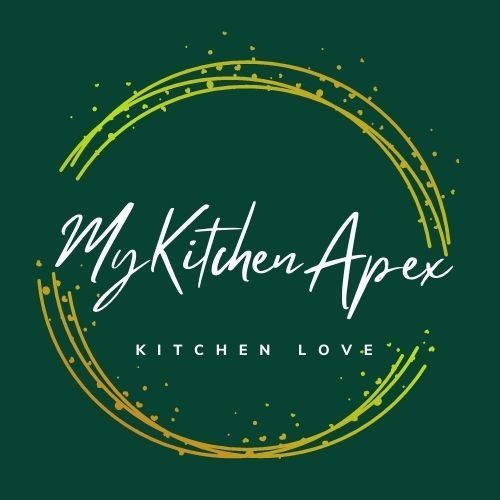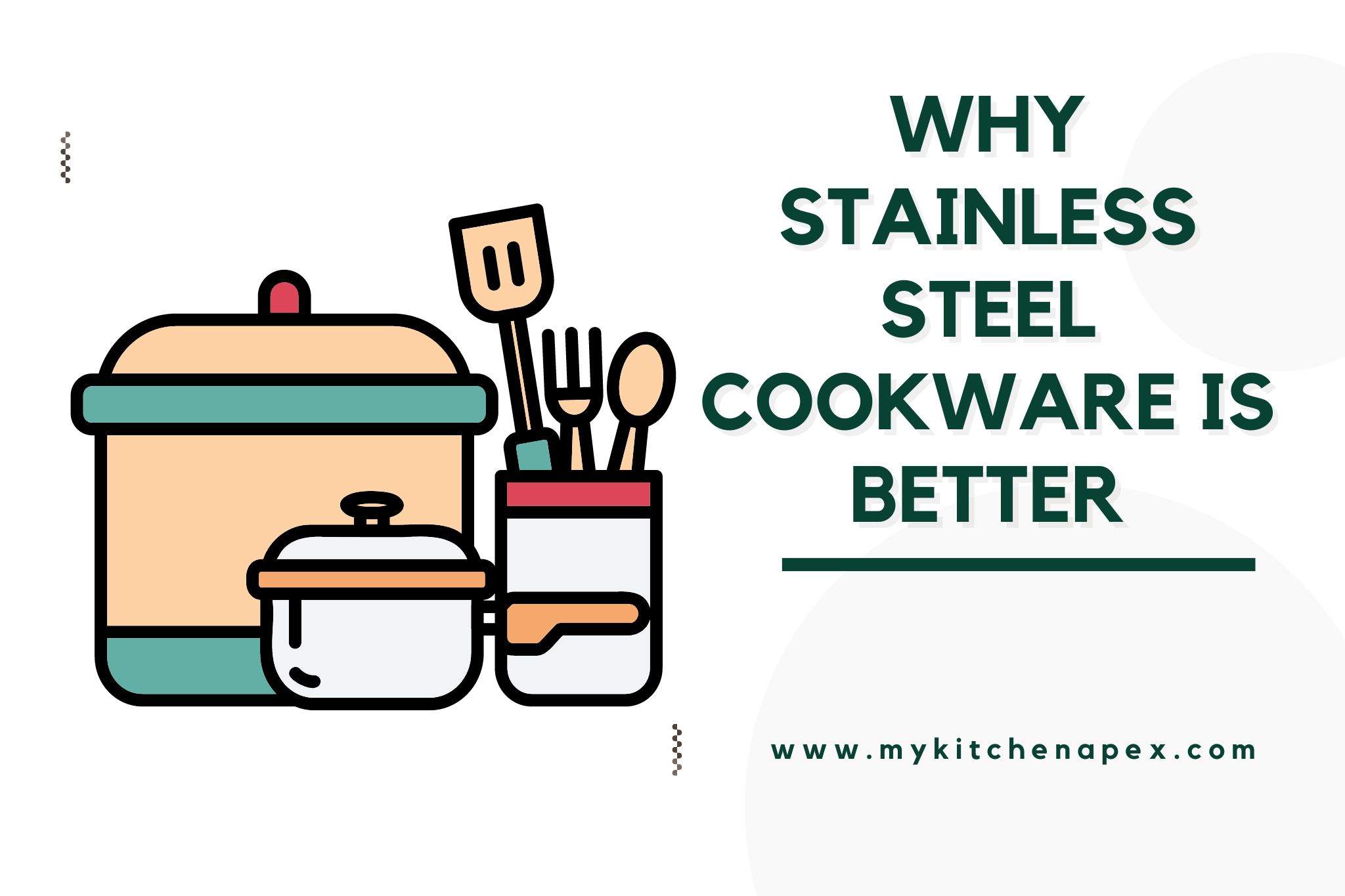Originally Created on: February 25, 2024 @ 4:59 pm
Are you tired of constantly replacing your cookware? Are you looking for a durable, long-lasting option that will stand the test of time in your kitchen? Look no further than stainless steel cookware.
Not only is stainless steel cookware known for its sleek and modern appearance, but it also offers a wide range of benefits that make it a superior choice for cooking enthusiasts.
Stainless steel cookware is renowned for its ability to distribute heat evenly, resulting in perfectly cooked meals every time. Unlike other materials, such as non-stick coatings, stainless steel is safe to use at high temperatures and does not leach harmful chemicals into your food. This makes it an ideal choice for health-conscious individuals who want to ensure the safety and quality of their meals.
Table of Content
Highlights:
- Durability and long-lasting
- Non-reactive and versatile
- Even heat distribution for consistent cooking
why stainless steel cookware is better
Stainless steel cookware is better than other types of cookware for several reasons. Firstly, it is extremely durable and long-lasting, making it a worthwhile investment for any kitchen. This type of cookware is also resistant to corrosion, rust, and staining, making it easy to clean and maintain.
Additionally, stainless steel cookware is non-reactive, meaning it won’t impart any off-flavors or discoloration to the food being cooked. This makes it ideal for cooking a wide range of dishes, including acidic foods like tomato-based sauces.
Furthermore, stainless steel cookware is versatile and can be used on all types of cooktops, including induction, gas, and electric. Its ability to distribute heat evenly makes it a great choice for achieving consistent cooking results.
In conclusion, stainless steel cookware offers numerous benefits, including durability, resistance to corrosion, and versatility in the kitchen. Its non-reactive nature and even heat distribution make it a practical choice for any home cook or professional chef.
You May Also Like: why do frying pans have a hump in the middle
Benefits of stainless steel cookware
Stainless steel cookware offers numerous benefits for home cooks and professional chefs. Its durability and resistance to corrosion make it a long-lasting kitchen investment that will hold up to frequent use and cleaning. The material’s non-reactive properties also make it ideal for cooking acidic foods like tomatoes and citrus fruits, as it won’t leach any metallic flavors into the food.
Additionally, stainless steel cookware is known for its even heat distribution, which helps prevent hot spots and allows for thorough cooking. This makes it versatile for a wide range of cooking methods, from searing to simmering.
Its sleek and modern appearance also adds a timeless and professional look to any kitchen, making it both functional and aesthetically pleasing. By choosing stainless steel cookware, cooks can enjoy reliable performance and a stylish addition to their culinary toolkit.
Maintenance of stainless steel cookware
Stainless steel cookware maintenance involves several key steps to ensure its longevity and performance. Firstly, always hand wash stainless steel cookware with a mild detergent and warm water rather than using a dishwasher, as harsh detergents and high heat can damage the material.
Additionally, avoid using abrasive cleaners or scouring pads, as they can cause scratches and diminish the cookware’s appearance.
To preserve the stainless steel’s shine and prevent discoloration, consider using a stainless steel cleaner or vinegar to remove any stains or water spots. Finally, store stainless steel cookware properly by stacking it with a layer of protection between each piece to prevent scratches and damage.
By following these maintenance tips, you can keep your stainless steel cookware in top condition for years to come.
Also Read: why do saucepans have copper bottoms
How to clean stainless steel cookware
To clean stainless steel cookware, start by washing the cookware with warm, soapy water and a soft sponge to remove any food residue. Avoid using abrasive cleaners or scouring pads as they can scratch the surface of the cookware.
If there are stubborn stains or burnt-on food, you can soak the cookware in a mixture of warm water and baking soda for a few hours to help loosen the residue.
After soaking, use a non-abrasive sponge or cloth to scrub the cookware, then rinse it thoroughly with clean water. To restore the shine to your stainless steel cookware, you can polish it with a small amount of olive oil or white vinegar applied with a soft cloth.
This will help remove any water spots or fingerprints and leave your cookware looking like new. By following these simple cleaning steps, you can keep your stainless steel cookware in top condition and prolong its lifespan.
Is it healthier to cook with stainless steel?
Yes, cooking with stainless steel can be healthier than other materials such as Teflon, as stainless steel is non-toxic and does not release harmful chemicals when heated.
This makes it a safer option for cooking, especially at high temperatures, as it doesn’t expose the food to potentially harmful substances.
Stainless steel pans also have a non-porous surface, making them resistant to bacteria and easy to clean, which can contribute to healthier cooking practices.
Additionally, stainless steel is a durable material that can last for many years, reducing the need for frequent replacements and minimizing environmental impact. Overall, choosing stainless steel cookware can be a healthier and more sustainable option for cooking.
Is it better to cook with stainless steel or nonstick?
When it comes to deciding between cooking with stainless steel or nonstick cookware, it ultimately depends on personal preference and the type of cooking being done.
Stainless steel offers durability and is ideal for high-heat cooking methods such as searing or browning. It also does not react with acidic foods, making it a versatile choice for a variety of dishes.
On the other hand, nonstick cookware is convenient for cooking foods that are prone to sticking, such as eggs or delicate fish. It requires less oil for cooking and is easier to clean, making it suitable for everyday cooking.
However, it may not be as durable as stainless steel and may need to be replaced more frequently. Ultimately, the decision between stainless steel and nonstick cookware depends on individual cooking needs and preferences. Both options have their advantages and can be used in different cooking scenarios.
Also Read: why is my garbage disposal overflowing
Final Thoughts
In conclusion, stainless steel cookware is a durable, non-toxic, and long-lasting option that offers even heat distribution and non-reactive properties, making it ideal for a wide range of cooking tasks.
Its resistance to corrosion and easy maintenance make it a practical and healthy choice for home cooks and professional chefs alike.
By following proper care and cleaning techniques, stainless steel cookware can maintain its performance and appearance for years to come, providing a sustainable and safe option for cooking.

